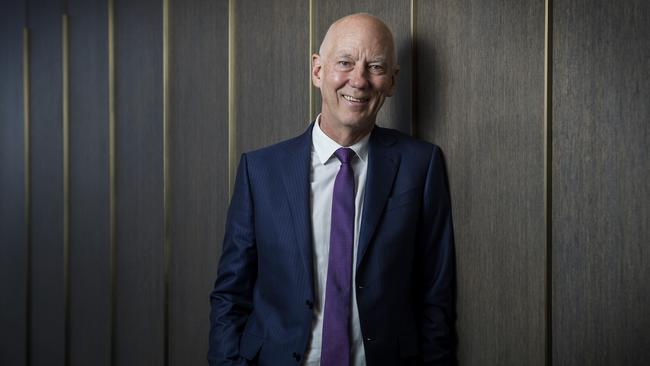E-health revolution gather pace as more services pledge their backing
Medical practitioners will soon have better access to patients’ health details through the industry support for My Health Record.

The e-health revolution is gaining pace as Australia’s largest pathology labs agree to upload reports to patients’ My Health Record and diagnostic imaging providers are set to link up next year.
Last week the Australian Digital Health Agency announced new agreements with pathology companies Primary Health Care and Australian Clinical Labs and seven software vendors and labs, after Sonic Healthcare’s decision to sign up to My Health Record.
More than 5.3 million Australians have a My Health Record. There was a 400 per cent increase in the number of shared health summaries uploaded in 2016-17 and a 200 per cent rise in links with private hospitals. The new links with diagnostic imaging and pathology providers will give clinicians even more reason to be involved and provide a critical mass of information to demonstrate the value of e-health.
Primary Health Care chief executive Malcolm Parmenter says the company’s pathology arm, which has labs in every state and territory, will be using My Health Record within months.
“We look forward to beginning the process of sharing pathology reports with patients from early next year and expect the number of our laboratories that are participating in this initiative to steadily increase over the course of 2018,” Parmenter says.
ADHA chief executive Tim Kelsey says it is a significant development to have the largest diagnostic organisations in Australia on board.
“We are working to deliver a My Health Record for all Australians next year unless they choose not to have one,” Kelsey says. “Health consumers will benefit from this significant commitment by the pathology industry and their software partners.”
The ADHA also has finalised service agreements with 16 software companies expected to allow diagnostic imaging providers to link up to My Health Record by the end of next year.
“My Health Record is making strong inroads into developing the support and services,” Kelsey says. “This work will help fulfil the potential of a secure online summary for all Australians and ensure healthcare professionals have access to key patient information.”
Royal Australian and New Zealand College of Radiologists president Greg Slater says the linkages will help make clinical radiologist reports “more readily available to support decision-making across the health system”.
Australian Diagnostic Imaging Association chief executive Pattie Beerens says: “ADIA is working to ensure that radiology patients are empowered to fully realise the benefits of the My Health Record system as increased functionality is rolled out, and that radiology practices are supported to participate efficiently and effectively.”
Community pharmacies also have signed up to the system.
Chemist Warehouse, representing 30 per cent of the community pharmacy market, and Corum, representing 1000 pharmacies, are the latest to be announced.
Far from a simple project, the My Health Record, formerly known as the Personally Controlled Electronic Health Record, has cost the federal government about $1.7 billion so far and has generated much political debate.
The most contentious aspect has been the decision to move to an opt-out model next year, not opt-in as originally planned. Some privacy commentators argue that consumers have not been adequately informed about the implications and there are insufficient safeguards on the information held on My Health Records.
Other health experts argue that a My Health Record has the potential to significantly improve service and access, and reduce the risk of errors or waste. When combined with new Medicare payments systems, and an update of item numbers and datasets, it is hoped the e-health revolution will also give a more complete picture of patient and system outcomes to enable stakeholders to further improve healthcare in Australia.
In the first annual report from the ADHA, chairman Jim Birch notes ongoing consultation and collaboration with stakeholders. “Technology is already transforming our ability to predict, diagnose and treat disease,” Birch says. “But there is much more we can do to realise its full potential for the health of every Australian: giving consumers more control of their health and care, connecting and empowering healthcare providers, and promoting Australia’s global leadership in digital health and innovation.”
The federal budget last May diverted more funds to the rollout of My Health Record and predicted efficiencies from the cut in unnecessary duplication of diagnostic imaging and pathology tests.
Despite the scale of the project and the sensitivities involved, officials from the ADHA were given last-minute notice not to attend the most recent budget estimates committee hearings because senators did not have any questions.


